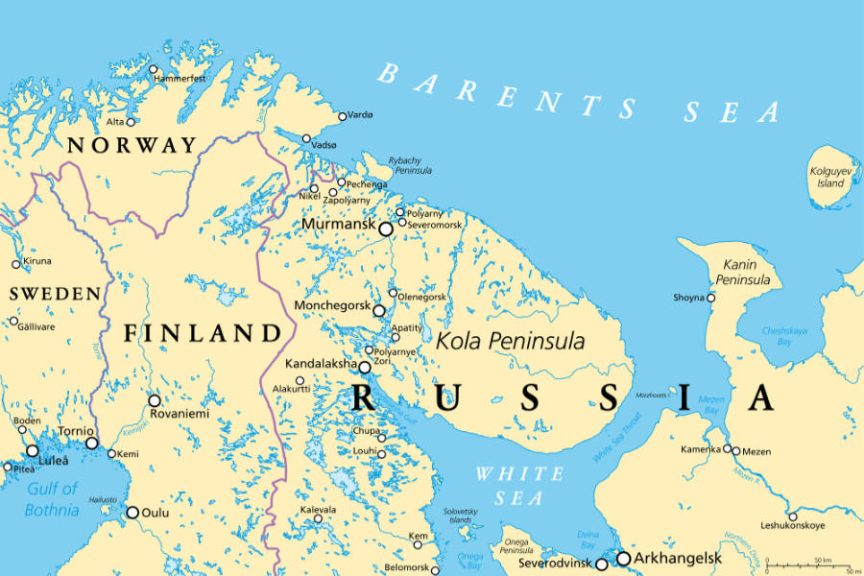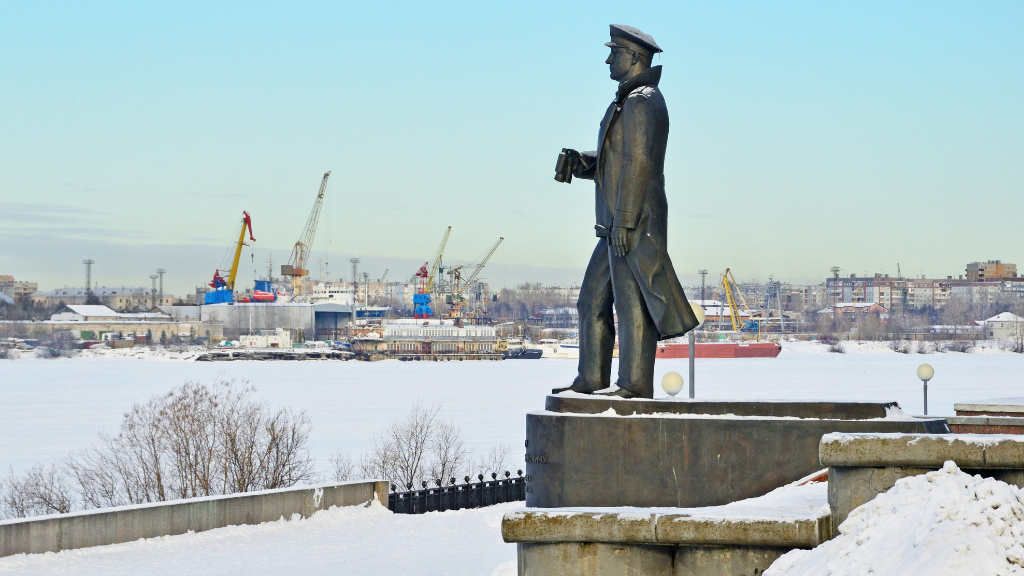The Arkhangelsk Regional Governor, Alexander Tsybulsky, has announced that Arkhangelsk Port is to develop a deep-water hub modelled on the Chinese ports of Tianjin and Ningbo-Zhoushan, which are world leaders in cargo turnover, digitalization, and robotization. As a result, one of Russia’s oldest ports will become the main gateway to the Northern Sea Route, a priority transport corridor for Russia.
Tsybulsky presented the project for the new “smart” deep-water port in a message to the Russian Legislative Assembly at the end of the summer. The new port is planned to open by the beginning of the 2030s. When completed, this will see cargo turnover increase by almost five times, with a capacity of up to 25 million tonnes of cargo per year, equivalent to handling about 1 million TEU.
The port will be able to receive vessels with a displacement of up to 75,000 tonnes, and it is expected to provide northern Russia with year-round access to the world’s oceans.
The existing infrastructure will be modernized in parallel. A new fishing terminal with a capacity for up to 5 vessels will be built in Maimaksa, the Ekonomiya terminal will be reconstructed, the canal bottom will be deepened, and river logistics will be restored.
Tsybulsky added, “The new port is not just about logistics. It is a chance to restart entire sectors of the economy. It will require about 65 new vessels, which means guaranteed orders for our shipyards. Strong industry and new jobs will give us the opportunity to invest more in education, healthcare, culture, and urban improvement. The development of the port is directly related to the development of the Arkhangelsk region.”
Arkhangelsk port will be positioned as the most modern in the Arctic region. Full digitalization, online cargo clearance within 24 hours, and a single access to data for participants should ensure the speed and transparency required for modern international logistics.
The climatic advantage is also on Arkhangelsk’s side: unlike the Arctic ports, navigation conditions in Arkhangelsk are less severe as the White Sea’s temperature varies seasonally, reaching summer surface temperatures of +9-15°C and winter temperatures below zero (-0.5°C). This is due to its high latitude location, leading to reduced sunlight and a generally cold climate with seasonal ice cover, although it receives some moderating influence from Atlantic air masses and river inflow, which lowers its salinity compared to the Arctic Ocean. The Arkhangelsk region is the starting point of the shortest route from Europe to Asia.

The port has seen increasing use, with sea transport in Arkhangelsk growing by 1.3 times since 2020, while export-import transshipment has grown threefold. In 2023, the region set a record for container transshipment: 230,000 tonnes, being 30 times more than in 2017. Under the “Arctic Express” project, 13,500 containers were shipped from Arkhangelsk to China in 2024. The port’s current cargo turnover consistently exceeds 5 million tonnes per year.
Moisei Furshchik, head of the Council of the Committee on Industrial Policy of the Russian Union of Industrialists and Entrepreneurs, says that “the advantage of Arkhangelsk is that the port is close to the European part of Russia, where there is a complex cargo structure: raw materials and goods that are well suited for container transportation. There is a large potential market here: the flow of goods goes both to import and export, and containers are not empty in either direction, meaning the transport efficiency doesn’t decrease. Meanwhile, it is important to ensure the high technology of such deliveries, as time and control are very important; it is necessary to integrate with Russian Railway systems, among others. In the Arkhangelsk region, this issue has been given significant attention. This creates the prospect that the route through this port attract significant demand by cargo owners.”
Currently, transportation between Arkhangelsk and Chinese ports is operated along the Northern Sea Route as part of the Arctic Express service. In mid-September, the Chinese ship “Istanbul Bridge” began a direct route from Ningbo, on China’s East Coast, to Felixstowe, in the United Kingdom, in a journey expected to last just 18 days. This is about to become the first trans-Arctic commercial service between China and Europe. According to VesselFinder as of today (October 6), the ship is just off the Kanin Peninsula.
The Northern Sea Route is a priority not only for Russia but also for Europe, as it significantly reduces the time it takes to deliver goods between Europe and Asia compared to the standard route through the Suez Canal.
Further Reading
Container Ship Traverses St. Petersburg – Shanghai Via Northern Sea Route In Record Time





